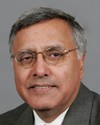Subject behaviour/officer response reporting, or use-of-force reporting, became a priority in British Columbia when my position was implemented in November of 2005. It was established as our number one priority: to implement standardized reporting in the area of force response by police officers across the province, recognizing the reality that police officers respond to situations, that is, they observe with their own eyes. They're dispatched to or they're flagged down by citizens who need help because something bad is happening: a crime is being committed--violence, property crime, or some combination thereof.
Police go to these calls and they assess situations. Central to their assessment of the situation is their assessment of the person who's become the subject of police interest, hence the term “subject behaviour/officer response”. Police officers assess that situation. They assess the behavioural profile of the person or persons they're dealing with, they respond according to their training, their experience, their force options, and so on, and they attempt to create a successful resolution to the existing problem.
The problem with it has been that reporting across the country has been inconsistent at best. Some agencies report at a very high threshold, some agencies report everything, and the rest lie somewhere in between. Mr. Lawrence talked about the ability to glean valuable research data that will support or negate certain positions that exist within society, but we need to have a sound reporting system based on consistent terminology, which Sergeant Stuart talked about, the alignment of the RCMP incident management intervention module and the CACP's national use-of-force framework. If we expect to see this reporting system go national, we need to have unity with respect to our terminology.
So we're working on that. We're working on putting a comprehensive system of subject behaviour/officer response reporting so that the answers the public deserves with respect to police/citizen encounters will be there; they'll be available. We can also, as a policing agency, discover existing and emerging trends in behavioural profiles and we can proactively direct our training so that our responses are the best they can possibly be, in essence, to make the public as safe as they can be.
So that's where we're going with reporting. It's a partnership with 14 municipal police agencies across Canada and the RCMP at this point.



